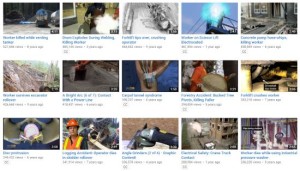Occupational Health and Safety Videos for Training and Awareness

If you haven’t had the opportunity, check out WorkSafeBC’s YouTube page. With over 400 videos, they have something for everyone and are a great training resource. The subject matter of the videos touches most all areas of occupational health and safety, including:
- LOTO and electrical safety
- GHS
- Forklifts, powered industrial trucks, and mobile equipment
- Struck-by
- Fall protection
- Confined spaces
- Hot work
- Asbestos
- Indoor air quality
- & much more
Click below to visit WorkSafeBC’s YouTube page
Source: YouTube WorkSafeBC


